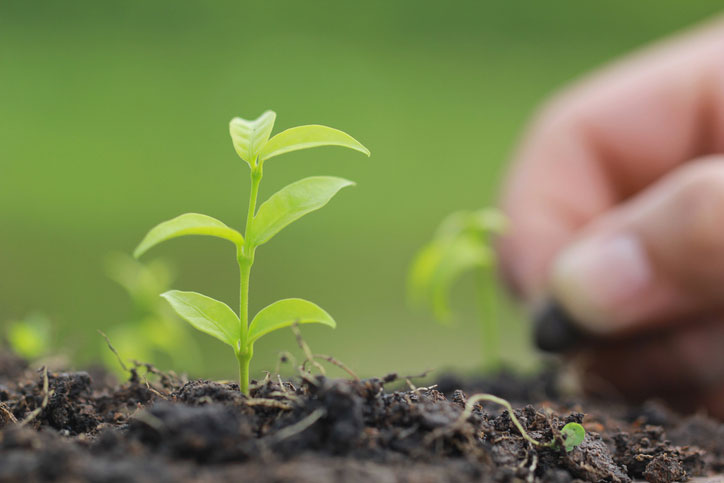 Sensors on tape that attach to plants yield new kinds of data about water use for researchers and farmers.
Sensors on tape that attach to plants yield new kinds of data about water use for researchers and farmers.
“With a tool like this, we can begin to breed plants that are more efficient in using water,” says Patrick Schnable, plant scientist at Iowa State University. “That’s exciting. We couldn’t do this before. But, once we can measure something, we can begin to understand it.”
The tool making these water measurements possible is a tiny graphene sensor that can be taped to plants—researchers call it a “plant tattoo sensor.” Graphene is an atom-thick carbon honeycomb. It’s great at conducting electricity and heat, and is strong and stable. The graphene-on-tape technology in this study has also gone into wearable strain and pressure sensors, including sensors for a “smart glove” that measures hand movements.
Researchers describe the various sensors and the “simple and versatile method for patterning and transferring graphene-based nanomaterials” to create the flexible sensors in the journal Advanced Materials Technologies.
“We’re trying to make sensors that are cheaper and still high performing,” says lead author Liang Dong, associate professor of electrical and computer engineering.
To do that, the researchers have developed a process for fabricating intricate graphene patterns on tape. Dong says the first step is creating indented patterns on the surface of a polymer block, either with a molding process or with 3D printing. Engineers apply a liquid graphene solution to the block, filling the indented patterns. They use tape to remove the excess graphene. Then they take another strip of tape to pull away the graphene patterns, creating a sensor on the tape.
The process can produce precise patterns as small as 5 millionths of a meter wide–just a twentieth of the diameter of the average human hair. Dong says making the patterns so small increases the sensitivity of the sensors.
“This fabrication process is very simple,” Dong says. “You just use tape to manufacture these sensors. The cost is just cents.”
In the case of plant studies, the sensors are made with graphene oxide, a material very sensitive to water vapor. The presence of water vapor changes the conductivity of the material, and that can be quantified to accurately measure transpiration (the release of water vapor) from a leaf.
The plant sensors have been successfully tested in lab and pilot field experiments, Dong says.
“The most exciting application of the tape-based sensors we’ve tested so far is the plant sensor,” Dong says. “The concept of wearable electronic sensors for plants is brand new. And the plant sensors are so tiny they can detect transpiration from plants, but they won’t affect plant growth or crop production.”
But that’s not all the sensors can do. The technology could “open a new route” for a wide variety of applications, the authors write in their paper, including sensors for biomedical diagnostics, for checking the structural integrity of buildings, for monitoring the environment, and, after appropriate modifications, for testing crops for diseases or pesticides.
Primary support for the work has come from the Faculty Scholars Program of Iowa State’s Plant Sciences Institute. A grant from the US Department of Agriculture’s Agriculture and Food Research Initiative will support more field testing of water transport in corn plants.
The Iowa State University Research Foundation has applied for a patent on the sensor technology. The research foundation has also granted an option to commercialize the technology to EnGeniousAg—an Ames startup company co-founded by Dong, Schnable, and other collaborators.
This article appeared on Futurity. Read the article.
Source: Iowa State University


